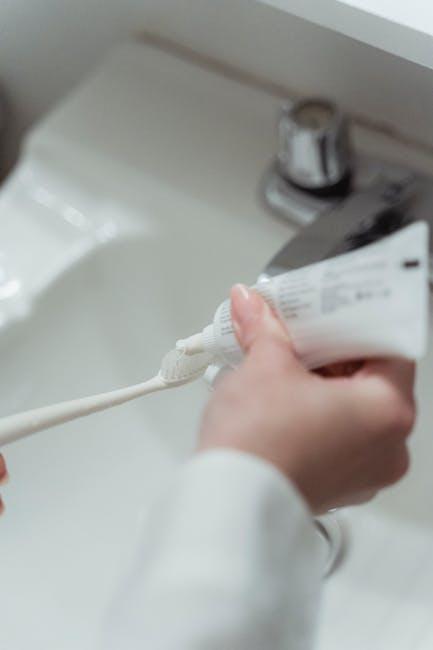Fluoride Ban Could Create Cavities For 1 Of Every 3 U.S. Kids – U.S. News & World Report
Fluoride has long been hailed as one of the most effective defenses against tooth decay, particularly among children. Recent discussions surrounding a potential fluoride ban have sparked concerns among dental professionals and public health advocates alike. According to U.S. News & World Report, such a ban could dramatically increase the incidence of cavities, potentially affecting 1 out of every 3 U.S. children. In this article, we will delve into the implications of a fluoride ban, explore the benefits of fluoride, and provide practical dental care tips to safeguard children’s oral health.
What is Fluoride and Why is it Important?
Fluoride is a naturally occurring mineral found in soil, water, and various foods. It works by strengthening tooth enamel — the hard outer layer — making teeth more resistant to decay caused by acid-producing bacteria. The mineral also helps reverse early stages of tooth decay, reducing the risk of cavities in both children and adults.
How Does Fluoride Protect Teeth?
- Remineralization: Fluoride encourages the repair of weakened enamel by helping deposit minerals back into the surface.
- Inhibits Harmful Bacteria: It disrupts the ability of bacteria to produce acid, lowering the risk of decay.
- Creates Resistance: Teeth become less susceptible to acid attacks, especially during sugar consumption.
The Potential Impact of a Fluoride Ban on U.S. Kids
Eliminating fluoride from public water supplies and dental products could have far-reaching consequences. According to findings highlighted by U.S. News & World Report, a fluoride ban could lead to:
- An increase in cavities affecting up to 33% (1 in 3) of American children.
- Greater disparities in dental health, especially in low-income and underserved communities.
- Higher costs for families and the healthcare system due to increased dental treatments and interventions.
| Current Fluoride Usage | Estimated Impact of Ban |
|---|---|
| About 73% of Americans receive fluoridated water | Potential rise in childhood cavities by 33% |
| Dental decay decreased by 25-40% with fluoridation | Corresponding increase in dental decay rates |
| Cost-effective public health measure | Increased dental care expenses nationwide |
Benefits of Fluoride: Why Experts Oppose the Ban
Many dental and public health experts emphasize the proven benefits of fluoride in preventing tooth decay. Key advantages include:
- Safe and Affordable: Fluoride in the recommended amounts is safe and one of the most cost-effective ways to prevent cavities.
- Reduces Dental Health Disparities: Communities with fluoridated water see fewer dental problems across socioeconomic levels.
- Supports Long-Term Oral Health: Less tooth decay means fewer extractions, fillings, and costly dental emergencies.
Practical Tips to Protect Children’s Teeth Without Fluoride
Should fluoride use decline, parents and caregivers will need to be extra vigilant in maintaining children’s oral health. Some helpful strategies include:
- Maintain a Consistent Brushing Routine: Brush twice daily with fluoride toothpaste if available. Use non-fluoride toothpaste only if fluoride is banned.
- Limit Sugary and Acidic Foods: Reduce snacks and drinks high in sugar and acid that can contribute to enamel erosion.
- Encourage Healthy Eating Habits: A balanced diet rich in calcium, phosphate, and vitamins supports enamel health.
- Regular Dental Visits: Schedule preventive dental exams and cleanings for early intervention.
- Sealants and Protective Coatings: Ask your dentist about applying sealants, especially on molars prone to decay.
Case Study: The Consequences of Fluoride Removal
One striking example comes from communities that discontinued water fluoridation. In these areas, studies have shown a clear increase in cavities and dental-related hospital visits. For example:
- Kalamazoo, Michigan: When fluoridation was stopped in 2011, childhood tooth decay rates began to rise noticeably within a few years.
- Canada’s Recent Debates: Certain towns facing fluoride bans observed a spike in dental complaints and higher treatment costs among children.
Lessons Learned from These Communities
- Fluoride acts as a “public health equalizer” especially in lower-income neighborhoods.
- The cost of treating dental problems far outweighs the cost savings from removing fluoride.
- Public education on oral health must intensify if fluoride use is restricted.
First-Hand Experience: Parents Speak Out
Many parents have witnessed the impact of reduced fluoride access on their children’s teeth. Jessica M., a mother of two from Ohio, shares:
“After our town briefly stopped fluoridating the water, I noticed both my kids developed more cavities than before, even though we maintained brushing routines. It was stressful and expensive to fix. Fluoride really seemed to protect them.”
Stories like Jessica’s highlight the real-world importance of fluoride in everyday dental health.
Conclusion: Why Fluoride Remains a Critical Public Health Tool
The debate over fluoride’s use in public water and dental products is a complex one, but the overwhelming evidence favors its continued inclusion. A fluoride ban could create cavities for 1 in every 3 U.S. kids, increasing health disparities and burdening families with higher dental costs. Fluoride’s role in preventing decay and supporting healthy smiles is both well-documented and critical, especially for vulnerable children.
As communities consider fluoride policies, prioritizing children’s oral health with proven preventive measures is paramount. Until safer, equally effective alternatives exist, fluoride remains one of the best defenses against childhood cavities.
Protecting smiles starts with informed decisions — and keeping fluoride accessible plays a key role in ensuring healthy teeth for generations to come.


